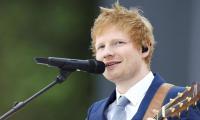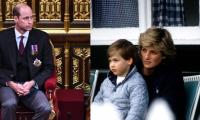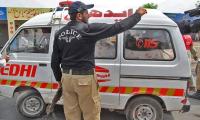private schools, 31 percent from the “middle-income” ones and 42 percent of students from the “upper-middle class”.
Considering the fact that the parents of children who study in “status-symbol” schools - an inept choice of words by Khalid Shah, the chairman of All Pakistan Private Schools’ Management Association - took to the streets in protest, the disparity in education systems and their subsequent shadow economies need to be seriously addressed.
Questionable performance
Parents enrol their children in private schools - be they elite or low-cost - there because they believe that the environment for learning is more conducive and satisfactory than in those operated by the government.
Rizwan Ali, who began the protest in Karachi against a well-reputed school, said he had enrolled his daughter there because of its self-proclaimed inculcation of Islamic values in children.
“But what the school has been doing, especially after the 17 percent hike in tuition fees, is anything but Islamic,” he added.
“I am not a money bank. The schools increase tuition fees every year by more than the five percent allowed under the government’s regulations. This time it was too much. I refuse to pay!”
Another parent, Safia Salman, whose son studies in another reputed school, remarked that she and her husband were considering switching schools after the sudden fees hike.
“We have been paying the money but the truth is that the studies aren’t that effective or that high a standard. My son’s performance in academics doesn’t justify the amount we pay every month.”
The bigger question that arose after the protests which erupted simultaneously in several cities of Pakistan, even prompting the prime minister to take notice, is that are private schools really contributing much to the academic and professional futures of millions of children enrolled in their various branches whose exact numbers are also unknown.
According to the study by Alif Ailaan, given that private schools have better infrastructure in terms of availability of washrooms and electricity, it does not guarantee the necessary qualification of teachers.
The study finds that an average teacher in a private school is between 21 and 30 years old, holds a bachelors degree and has less than five years of teaching experience.
Ono the other hand, a “notorious” government school teacher is between 41 and 50 years old, has a masters degree and some kind of professional training in the past five years.
Moreover, the reason why 69 percent of Pakistani parents would prefer to enrol their child in a private school - contemporary education especially in English language - is also a false notion. On the basis of Aptis tests designed to measure the basic knowledge of the English language conducted in 2013, it was found that most private school teachers are not qualified enough to teach in English. Around 62 percent of private school teachers who took the test attained the lowest possible score in comparison with 56 percent government school teachers.
The Alif Ailaan data also reveals that only five percent private school teachers in Pakistan use English as a medium of instruction against a meagre one percent of government school teachers. Considering the self-proclaimed and much advertised success of the private sector in filling the vacuum left by the government in providing “quality education” to children and charging exorbitant amount of tuition fees from parents, the data reveals the fallacy of these tall claims.
The shroud of mystery
On one hand, there is no tangible evidence to suggest that private schools provide a better learning environment for children, while on the other, the exact number of students enrolled in them are also unknown because the major schools chains do not share the numbers.
In fact, they do not even allow government officials to enter their premises. An official of the Sindh directorate of private education shared with The News that once he had went to inspect the campus of a renowned school chain, he was not even allowed inside the building.
Sajid Ali, an academic researcher associated with the Institute of Education Development of the Aga Khan University, also shared a similar experience. “I tried to conduct a study on the fees structure of and the performance of students in private schools but the major chains don’t share information unless you go to them on the pretext that you want to enrol your child there. If they see you as a prospective parent, only then do they share the fees structure,” he said.
A university professor, on the condition of anonymity, said smaller establishments were so tired of being bullied by government officials that they felt the need to set up a private schools’ union to safeguard their interests. “The big school chains aren’t part of the private schools’ union anyway,” the professor added.
The Sindh private schools directorate has more than 12,000 registered schools in the province, but there is no data on how many unregistered ones are operating.
5 percent or 10 percent increase?
The federal government and the Punjab High Court prohibited private schools’ fees hike this year, but the Sindh government recently allowed an increase of 10 percent, citing the Sindh Private Educational Institutions (Regulation & Control) Ordinance 2001.
However, the rules of the ordinance were amended in 2005 and they clearly state that only five percent increase in school tuition fees is allowed, that too according to the amount collected the previous academic year.
The managements of private schools had filed a case against the five percent increase and the pending legal matter was an obstacle in implementing the rules which specified tuition fees, said Mansoob Ahmed Siddiqui, the Sindh director of private institutions and inspections.
Another problem, he added, was that the directorate was acutely short of staff and qualified officers.
After the parents’ protest outside the Karachi Press Club, a meeting was held at the Sindh Assembly building wherein it was decided with the participation of schools’ managements and government officials that a 10 percent increase in fees would be acceptable.
It was also decided that the managements of schools, which had raised their tuition fees, would be issued with show-cause notices for making the decision on their own of increasing tuition fees by more than the 10 percent allowed in a single academic year.
An authorised committee will decide if the current increase in fees will be allowed this year or not.
“In other words, the matter was swept under the carpet with the setting up of yet another committee,” said Rizwan Ali.
“How can the government violate its own rules and accept a 10 percent fees increase in a meeting with the schools’ managements without even listening to what the parents have to say? This is ridiculous!”
Education secretary Dr Fazlullah Pechuho said the government planned a registration drive after Eid-ul-Azha and a crackdown on schools that were not following government regulations.
He added that the government would ensure stringent monitoring of all private schools whose managements would not be allowed to make decisions independently.
TEACHERS PERFORMANCE
GOVERNMENT TEACHERS
PRIVATE TEACHERS
l41-50 years old
lHolds a Master’s degree
and a Primary Teaching
Certificate (PTC)
lHas almost 15 years of
teaching experience
lHas received some
professional training in the
last 5 years
l21-30 years old
lHolds a Bachelor’s degree
and a B.Ed
lHas less than 5 years of
teaching experience
lHas received little or no
in-service training in the
last 5 years
This picture taken on January 30, 2023, shows commuters passing through the Empress Market in Pakistan's port city of...
Students give an Admission Entry Test for the Academic Session Fall 2025 in Aror University on April 13, 2025. —...
Students give a mega IT test at its PAF branch on Sharea Faisal on April 13, 2025. — Screengrab via...
Sindh Chief Secretary Sindh Asif Hyder Shah chairs a meeting on April 12, 2025. — Screengrab via...
This representational image of fishermen pull a fishing net ashore at the Clifton beach in Karachi. — AFP/FileThe...
Karachi Water & Sewerage Corporation CEO Ahmed Ali Siddiqui looks on in this image released on March 26, 2025. —...







